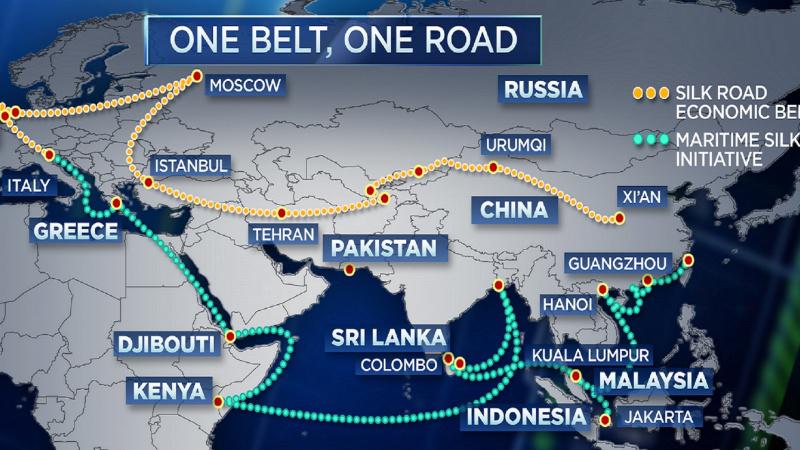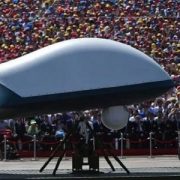When in 2013 President Xi Jinping launched the One Belt One Road program, it was the first time in its history really that China decided to take a decisive move westward.
True, during Han times the empire tried to secure Central Asia by reaching the shores of the Caspian Sea, and from roughly 60 BC established some kind of Protectorate of the Western Regions, which dealt with the region’s defense and foreign affairs. But shortly after, they had to give it up due to inability to sustain the logistics of this advanced base so far out from the imperial heartland.
Some seven centuries later, a re-founded empire under the Tang dynasty reached out to the same region, also possibly based on the partially Turkic origin of the rulers. Before that, as Nicola Di Cosmo wrote in his recent book,[1] «in the sixth century, the steppes – and not China – had become the most forceful motor of change. What was new in the China-steppe relationship is that nomadic politics had become a decisive element in facilitating the evolution of commercial routes, and more specifically, in the economic relations between China and the West».
On the other side of the Eurasian continent, steppes were also Byzantine. As Michael Maas explains,[2] this happened by developing and fine tuning the Roman tradition of dealing with people of the steppes and introducing «a Christian apocalyptic literature that gave special place to the nomads in an eschatological scheme». All these elements compounded «gave the Eurasian nomads a new posture and significance in imperial affairs».
Against this background for about a century, roughly from 640 to 750, the Tang were the dominant power of the Tarim basin, wresting it from the aggressive Tibetans descending from their inhospitable mountains and from the then loosely organized Turkic-Mongolic rulers. The push east of the Arabs and the battle of Talas in 751 shoved the Tang back east to the Chinese central plains and began the long phase of Islamization of the region.
Again the Ming and the Manchu tried to reach out to the west, with far less ambitious plans, by settling in modern Xinjiang. But all these campaigns and attempts were defensive. They didn’t aim to control those areas to reach out further west. They aimed to secure the rich agricultural central plains in the east from attacks of the nomadic and semi-nomadic people of Central Asia by depriving them of their home turf.
Xi Jinping’s Silk Road is entirely different. It wants to build a solid network of business and shared wealth, reaching out to the western shores of Europe and the Mediterranean Sea. Never has China thought so far away. The first, official launch by the Chinese government is the Belt and Road Initiative, BRI. It has a 100 billion dollar mega-fund, and dozens of countries joined it along the way.
This initiative today actively changes the geography of the last 500 years. Since 1492, when Columbus discovered America, and perhaps even earlier, since the Turks conquered Constantinople in 1453. Then the routes of international contacts and commerce jumped Eurasia and the Mediterranean and developed across the Atlantic and the Pacific, to circumnavigate the globe establishing much more direct contacts between Europe and the Far East, and bypassing the Turkish hold of western Asia. The world became different then.
Precisely because the present initiative changes 500 years of history, China cannot objectively ignore the recent ancient history of the Silk Road. In fact, just a few years before the official launch of the Chinese Silk Road, the Americans had actually attempted to build their presence in Central Asia, a fundamental hub of the Silk Road.
After the attack on the Twin Towers on September 11, 2001, the Americans first occupied Afghanistan and then tried to take possession of Iraq. Afghanistan is identified as the center of the Eurasian chessboard by Brzezinski,[3] and Iraq is Mesopotamia, the land of passage between Central Asia and Africa. In fact, the Americans had placed their pawns at the center and then consciously or unconsciously had seen the rebirth of trade and trade along the Eurasian continent.
Afghanistan was the place where the Soviets were defeated by the mujahideen, supported by the US in the 1980s. Afghanistan had been a century before the limit of the projection north of the British Empire occupying India. The British were stopped then by the local tribes supported by Moscow.
Before that Silk Road, there had been the great trade route opened by the Pax Mongolica of the 13th and 14th centuries, following the conquests of Genghis Khan. The Turkic-Mongol empires that dominated Eurasia essentially until the 19th century were the heirs of that Pax Mongolica.
The Manchu empire in China, the Mughal empire in India, and the same Ottoman empire in Turkey were all multi-ethnic empires that essentially collapsed in the 19th century (at the beginning of the century in India and at the end of the century in Turkey and China) under the pressure of the Western powers, which had become rich and strong thanks to the four centuries of accumulation of power via trans-oceanic trade across the Americas.
But even the Turkic-Mongol empires had a precedent: the millennial presence of Persian empires in Central Asia. The foundation of the first Persian empire under Cyrus and then under Darius and Xerxes gave a first impulse to the emergence of the power of the Greek cities. The conquest of the Persian empire by Alexander the Great in the 4th century BC created a network of Hellenistic-Persian kingdoms that lasted until the region fell again to Persians under the Parthian and then Sassanid dynasties.
These Persian empires were the limit to the east and the safety belt for centuries of the Roman Empire. The Arab conquest of Persia and the following Islamization of the territory gradually put an end to religions such as the cult of the Zoroaster and Mitra, which for centuries had had a far greater influence than Christianity.
Yet the Persian influence continued for centuries even after the end or the weakening of the empire. During the Yuan dynasty in China, Persian was spoken at court. The Persians greatly influenced the Ottoman Turkish and the Indian Mughals. In some ways, Persia itself, which has a Muslim Shiite majority, probably wanted to emphasize its Muslim identity as different from the Arabs, who are predominantly Sunni.
Besides the empires of the sword, there is then the empire of the spirit. The great tension toward China began in the 12th or 13th century in Europe with the legends of the fabulous kingdom of the Priester John. The popes sent letters and messages to the emperors of China against the growing Muslim threat. In some ways, the difficult dialogue between China and the Holy See today is also a legacy of that attention in Rome.
The creators of new Chinese Silk Road cannot forget the recent and ancient history of the other Silk Roads and be successful. It must be based on past experiences, and can’t pretend they did not exist.
[1] Nicola Di Cosmo and Michael Maas. Empires and Exchanges in Eurasian Late Antiquity, 2018.
[2] op.cit. essay: “How the Steppes Became Byzantine.”
[3] Zbigniew Brzezinski, The Grand Chessboard: American Primacy and Its Geostrategic Imperatives, 2016.






